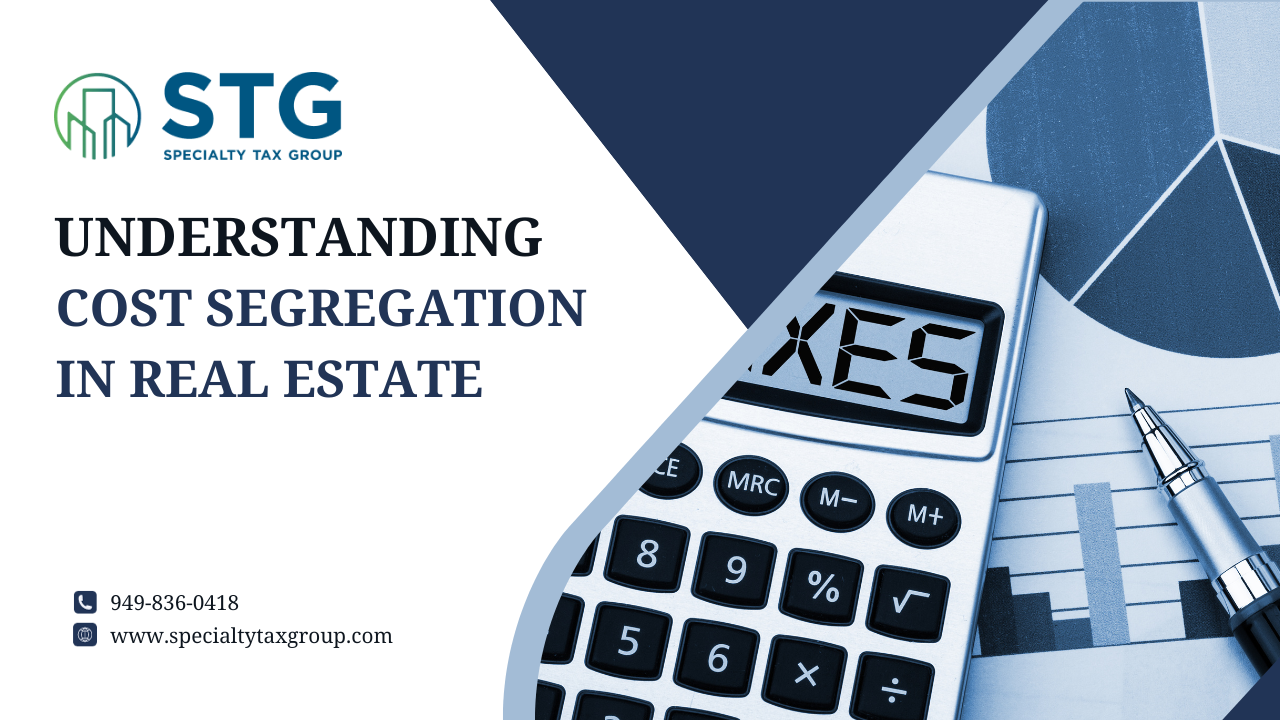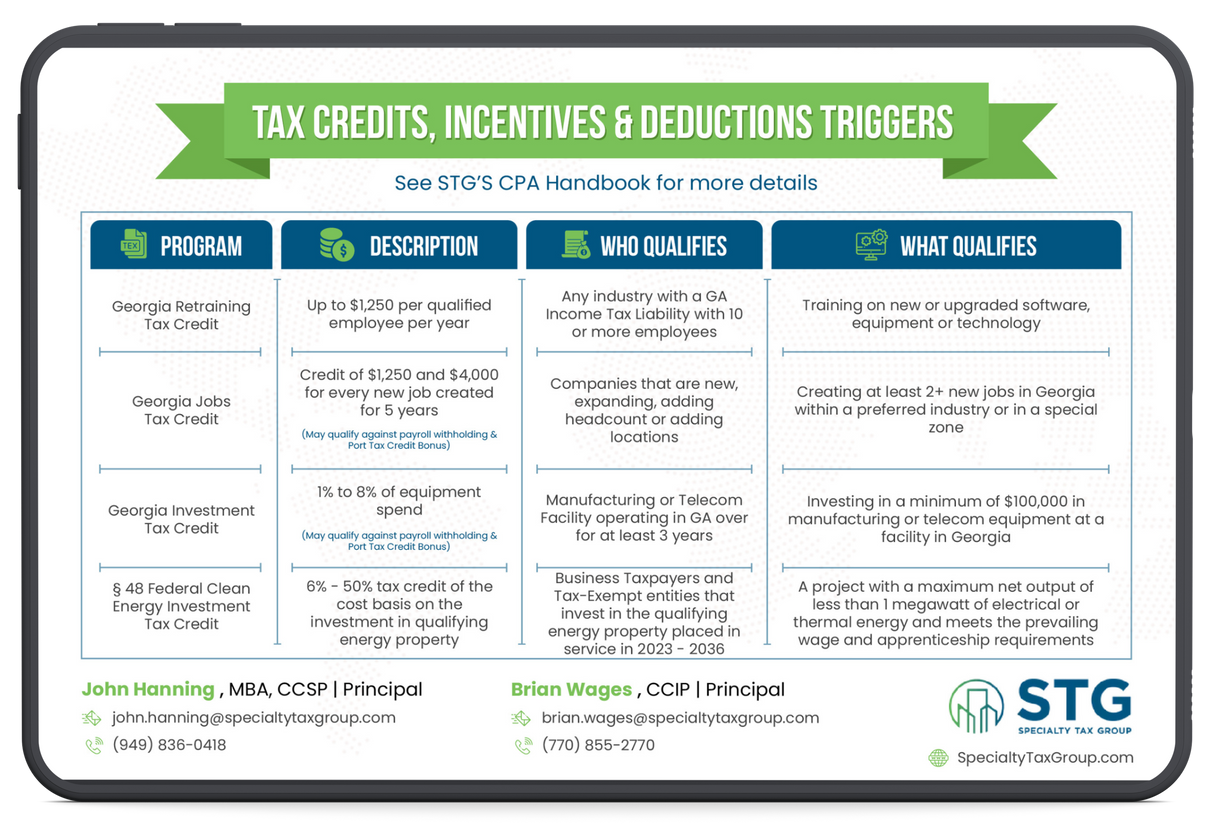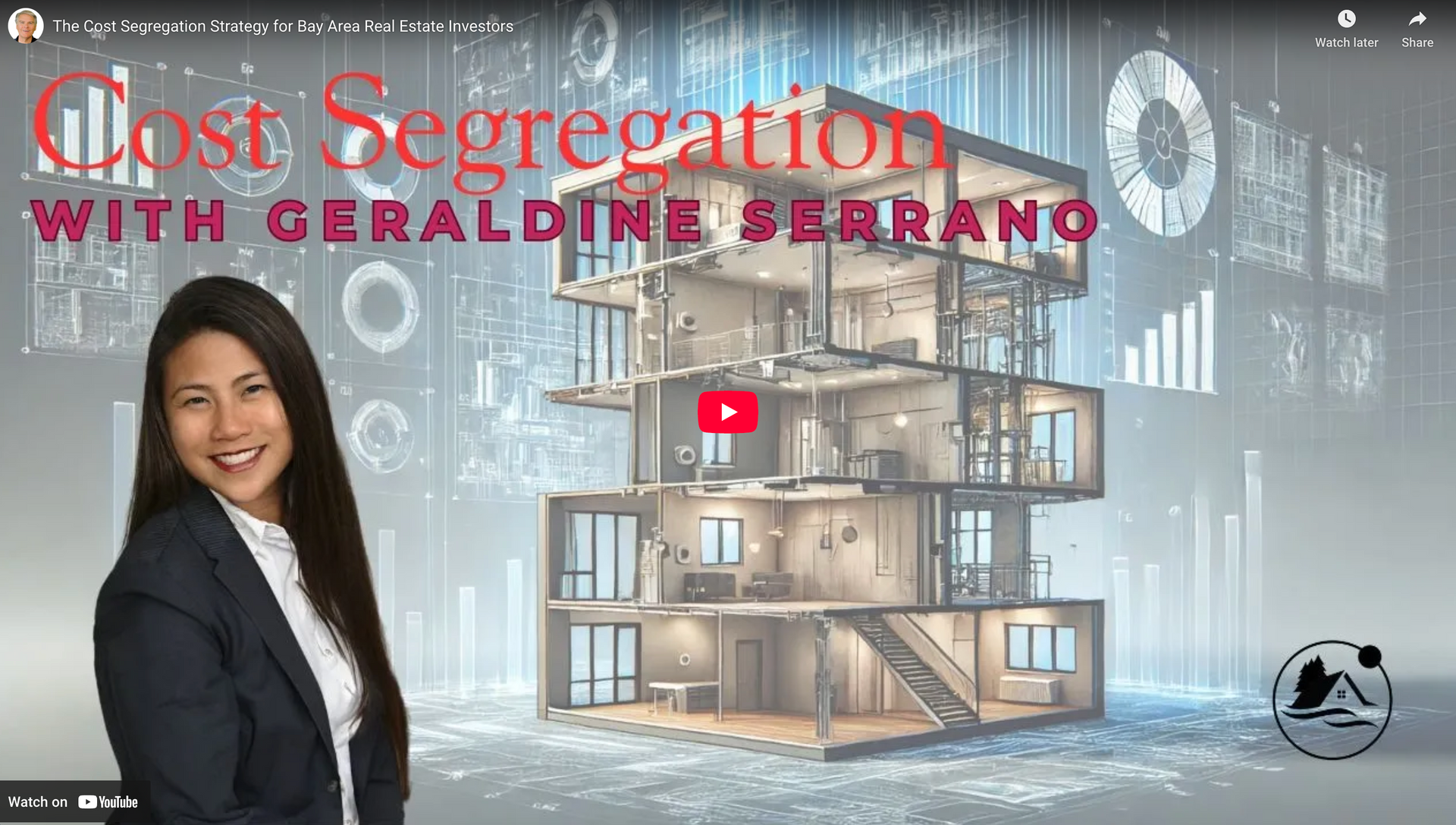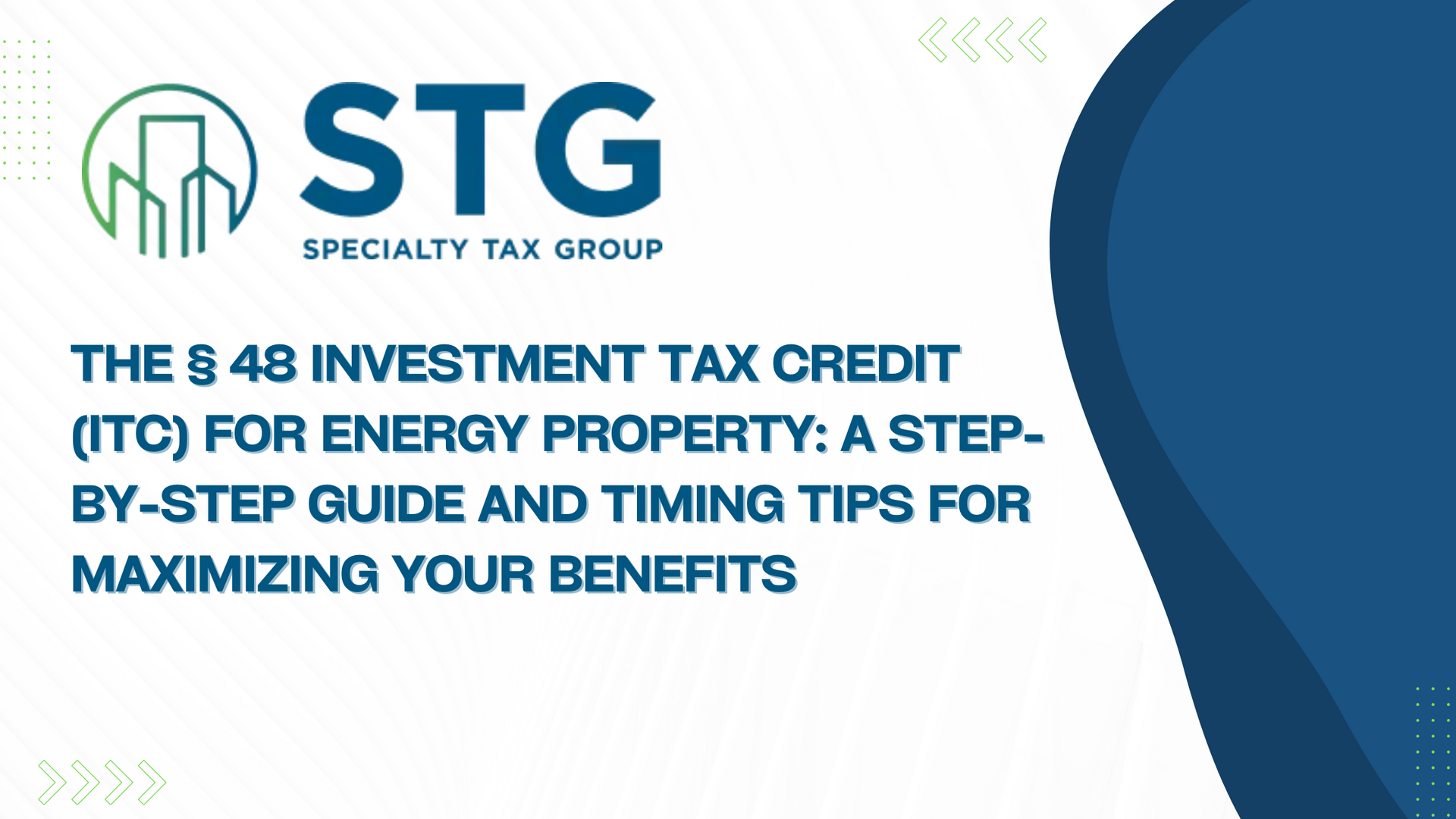This blog post has been researched, edited, and approved by John Hanning and Brian Wages. Join our newsletter below.
Newsletter Form
Thank you for joining our newsletter. We will email you the latest updates every other Thursday at 12pm.
Please try again later.

If you're a real estate professional or investor, you've likely come across the term
cost segregation. In this article we will explore the definition of Cost Seg and how it can benefit you as a real estate owner.
What Is Cost Segregation?
Cost segregation is an often overlooked strategy employed by savvy real estate investors to maximize tax savings. Essentially, it is the process of identifying and classifying property assets. When only lump-sum costs are available, cost estimating techniques are used to “segregate” or “allocate” costs to individual components of property (e.g., land, land improvements, buildings, equipment, furniture and fixtures, etc.).
Cost segregation is an effective tax strategy that allows real estate investors and professionals to accelerate depreciation deductions, consequently, reducing their tax liability and improving cash flow, largely thanks to various tax codes and laws.
Importance of Cost Segregation
Through cost segregation, real estate investors can considerably reduce their tax liabilities, therefore, increasing their cash flow. It's a win-win situation.
- Increased Tax Savings: By accelerating depreciation, investors lower their taxable income, resulting in substantial savings.
- Improved Cash Flow: With reduced tax liabilities, investors can enjoy enhanced cash flows, allowing them to reinvest back into their business or pursue new opportunities.
- Retroactivity: One of the key benefits of cost segregation is its retroactive nature. Even properties purchased, built, or remodeled years ago may qualify for substantial tax benefits.
By harnessing the power of cost segregation, real estate investors and property owners can derive substantial benefits, leading to a more profitable venture. However, navigating the process of cost segregation can be nuanced and requires a certain level of expertise. That's where working with our team at Specialty Tax Group can provide unparalleled advantages.
What is Cost Segregation for Real Estate Investments?
If you're a real estate investor, understanding cost segregation can turn out to be a significant game-changer for your tax strategy. But what exactly is cost segregation? Let's dig a little deeper.
Defining Cost Segregation
Simply put,
Cost Segregation is a tax-saving strategy used by real estate owners to reduce their tax liability in the current year. Implementing this strategy allows them to accelerate depreciation and recover costs for certain property assets over a much shorter recovery period. Ultimately, this results in sizable tax savings in the near term. What seems like simply reclassifying assets, can actually be a massive win for individuals and organizations alike when it comes time to file tax returns.
Accelerating Depreciation: A Simple Illustrated Concept
Now, you may ask: how does accelerating depreciation work, and how is it tied to cost segregation? Let's simplify this with a basic example.
Suppose you purchase a commercial building for $5M. Ordinarily, a commercial property is classified as “real property” with a depreciation recovery period of 39 years. This means, by convention, you would hold off recognizing the full cost of the building until nearly four decades later.
Not every element of your building should logically depreciate at the same rate. For instance, you could classify certain assets - such as carpeting, landscaping, or specialized machinery - under a much faster depreciation schedule, say 5, 7, or 15 years. Swiftly depreciating these "short-life" assets allows for larger tax deductions in the early years of property ownership.
| Depreciation Period | Property Examples |
|---|---|
| 5 Years | Carpeting, appliances, millwork, specialized plumbing and electrical to machinery |
| 7 Years | Office furniture, fixtures |
| 15 Years | Landscaping, fences, parking lots, pools |
| 39 Years | Standard commercial building and structural components |
As you can see, understanding cost segregation and how it accelerates depreciation could potentially save you a lot in terms of taxes. It offers an informed choice of structuring your property investments for optimized tax benefits.
Tax Legislation Impact
Over the years, tax legislation has played a crucial role in shaping the practice of cost segregation in real estate. Understanding these laws can not only save you money but also enhance your investment strategy. Let's discuss the significant pieces of legislation and tax codes that have influenced cost segregation.
The Modified Accelerated Cost Recovery System (MACRS)
The introduction of the Modified Accelerated Cost Recovery System (MACRS) in 1986 heralded a critical shift in the handling of cost segregation. This system sets the depreciation periods for different types of property, thereby impacting how assets are classified for depreciation purposes.
- Personal property assets: These assets, typically with a lifespan of 5, 7, or 15 years, are often eligible for accelerated depreciation. First year bonus depreciation is also utilized.
- Real property assets: Real property assets, on the other hand, often have a depreciation period of 27.5 years for residential property and 39 years for non-residential property.
The Tax Cuts and Jobs Act (TCJA)
Arguably one of the most consequential pieces of tax legislation in recent years, the Tax Cuts and Jobs Act (TCJA) of 2017, made considerable changes to depreciation laws, offering substantial benefits for those who apply cost segregation.
| Tax Code | Impact |
|---|---|
| 100% Bonus Depreciation | This provision allows real estate investors to deduct the whole depreciating value of an asset in the first year, amplifying the effect of cost segregation. |
| Qualified Improvement Property (QIP) | Reclassified as 15-year property under TCJA rules, cost segregation can accelerate depreciation on these asset types |
Who Can Benefit from Cost Segregation?
As a real estate investor or professional, you might be wondering, who can truly benefit from cost segregation? An essential tool in the acquisition, ownership, and disposition stages of a real estate investment, this strategy offers tax benefits that can significantly enhance your profitability. Let's delve into the types of properties where cost segregation really shines:
- Commercial Buildings:
Commercial buildings, whether newly constructed, purchased, or under leasehold improvements, are prime candidates for cost segregation. - Rental Properties:
If you own a rental property, either residential or non-residential, you should be leveraging cost segregation to depreciate property components over a shorter lifespan, leading to sizable tax savings. - Renovation Projects:
Remodels, restorations, or expansions of existing structures can drastically benefit from a cost segregation study, as this can reveal upfront deductions related to removed or replaced property elements.
Certainly, by implementing cost segregation in your real estate strategies, you can greatly reduce your tax burden, improve your cash flow, and maximize your property's financial potential. At Specialty Tax Group, our mission is to save you money every step of the way.
Next up, let's further unpack these potential savings, and explore how cost segregation studies play a pivotal role.New Paragraph
How Does The Cost Segregation Study Work?
Here is how you can understand the entire process of cost segregation implemented in real estate. Cost Segregation Study is a tax-saving strategy used by real estate owners and investors to accelerate depreciation deductions, defer tax, and improve cash flow. This practice aims to identify, segregate, and reclassify certain assets into faster depreciable lives of 5, 7, and 15 years from the standard 27.5 or 39 years.
1. Property Inspection
The first step in a cost segregation study is an extensive physical examination of the property. This involves analyzing blueprints and site plans, touring the property, and taking photographs. The goal is to identify and list all assets related to the property.
2. Asset Classification
Asset Classification is the process of categorizing assets based on their nature and functionality. The assets will be classified into several categories: tangible personal property, land improvements, and real property (structure). The tangible personal property and land improvements usually have shorter depreciation periods, thus providing substantial tax savings.
3. Valuation
The next step involves the process of valuation. This is where the cost of each classified asset is estimated. This can be done through documentation from the time of construction or purchase or through cost estimating techniques. The purpose of the valuation step is to assign a fair market value to each asset.
4. Documentation
Every step, finding, and classification is detailed out in thorough documentation. This documentation serves as proof to justify the depreciations claimed. Not only should documentation detail the segregation process, but it should also make clear the legal justifications for each asset classification.
5. Reporting
Finally, all the data and information gathered during the cost segregation study is compiled into a comprehensive and easy-to-understand report. The report will include a summary of the methodologies used, a detailed asset list with their corresponding classes and values, and the projected tax benefits. The report is then reviewed for quality and accuracy before being presented.
Remember, an effectively performed Cost Segregation Study could potentially save you thousands or even millions in federal taxes over time. Reputable companies like our Specialty Tax Group can guide you through each step, ensuring you maximize your tax savings!
Professionals Involved
When undertaking a cost segregation study, it's crucial to have the right team of professionals in your corner. Let's take a look at some key roles
Tax Advisors
Tax advisors play an integral role in tax planning and strategies, ensuring your cost segregation strategy is compliant and optimal. Here's what they bring to the table:
- Deep understanding of tax laws: Tax advisors are familiar with the intricate details of the IRS' tangible property regulations, enabling your business to gain maximum depreciation benefits.
- Tactical advice: They provide guidance on the best times to conduct a study, how to document findings, and more.
Engineers
Engineers (particularly those specialized in construction engineering) hold a vital part in the process. Here's why they are indispensable:
- Expertise in identifying and classifying assets: Engineers can accurately break down the cost of a property into its constituent parts, a crucial step in cost segregation.
Precision and accuracy: Constructions engineers know how to benchmark the cost of various components, helping to assign accurate costs to each piece of your real estate assets.
Appraisers
So, why engage an appraiser? Here's why their role is significant:
- Property Valuation: To ensure the value of each property component is spot on, an appraiser's expertise is essential. They help determine the fair market value of properties, providing a reliable baseline for the cost breakdown.
- Relevant market insight: Appraisers provide crucial information on market conditions and trends, further ensuring accurate property valuation.
Remember no one knows your property better than you do. Involve yourself in the process to ensure nothing is overlooked, resulting in a comprehensive and accurate cost segregation study.
Real-life Examples
For those seeking clearer insight into the tangible benefits of cost segregation in real estate, the most effective means is via real-life examples. Such examples not only highlight the advantages but also underpin potential drawbacks. Let's look at some specific cases
Case Study 1 - Multifamily Property Investment
John, a real estate investor in multifamily properties, decided to use cost segregation on one of his buildings that originally would be depreciated over the typical 27.5 years. By opting for cost segregation, John was able to accelerate depreciation on several components of the property such as the landscaping and certain appliances to 5, 7, and 15-year property classes
| Item | Depreciation Year (Prior) | Depreciation Year (After Cost Seg) |
|---|---|---|
| Appliances | 27.5 | 5 |
| FF&E | 27.5 | 7 |
| Landscaping | 27.5 | 15 |
As a result, John benefited from an increased cash flow due to a reduction in taxable income in the early years of his investment.
Case Study 2 - Commercial Property Investment
Sarah, an investor in commercial properties, decided to undertake cost segregation for her office building. However, she did not plan to hold onto the property for long. When selling, due to the depreciation recapture rules, the gain on the sale of her property was larger than it would have been without cost segregation.
Note: The depreciation recapture rules mean that the more depreciation you claim, the larger your tax liability can be when you sell.
The examples above demonstrate that while cost segregation can offer substantial tax benefits and increase cash flow, it may not necessarily be advantageous for everyone, especially if you plan to sell your investment property in the near term. Furthermore, cost segregation studies require professional knowledge and experience. Therefore, it's crucial to consult with tax professionals like the Specialty Tax Group to ensure the right strategy according to your specific situation.
When Should You Consider a Cost Segregation Study?
As beneficial as it sounds, Cost Segregation isn't something to be carried out casually or constantly. It's a decision, when made at the right time, can save you significant dollars. So, when should one consider a Cost Segregation study? Let's dig into this.
Acquisition of New Property
One common scenario where a cost segregation study becomes useful is when you have recently acquired a new property. It is a significant investment, and it's naturally beneficial to ease the financial burden as much as possible. Accelerating depreciation through cost segregation can alleviate some of that load.
Substantial Renovation
Another opportune time for a cost segregation study is after a property has undergone substantial renovations. Renovations often involve costs that can be classified as personal property or land improvements, both of which depreciate at a quicker rate. Identifying and segregating these assets can result in larger tax write-offs.
Note: Keep in mind, conducting a cost segregation study after substantial renovations often requires a sufficiently detailed breakdown of the related expenses, which isn’t always easy to obtain from contractors.
Changes in Tax Law
Changes in tax legislation can also cue a cost segregation study, especially if those changes favor property owners. It's crucial to have a tax professional on your team who can identify these legislative changes and act accordingly.
In Conclusion
To make the most out of your investment, it's vital to consider cost segregation at the right time. Whether it's when you acquire a new property, post a major renovation, or in line with a change in tax law, a well-implemented cost segregation study can offer tremendous advantages.
At Specialty Tax Group, we can help in identifying these timely opportunities. Get in touch and let us help grow your real estate investment in a tax-efficient manner!
2024 Tax Guide
Have A Question?
Contact us today and our friendly team will reach out as soon as possible.
All Rights Reserved | Specialty Tax Group | Powered by Automationlinks | Privacy Policy





